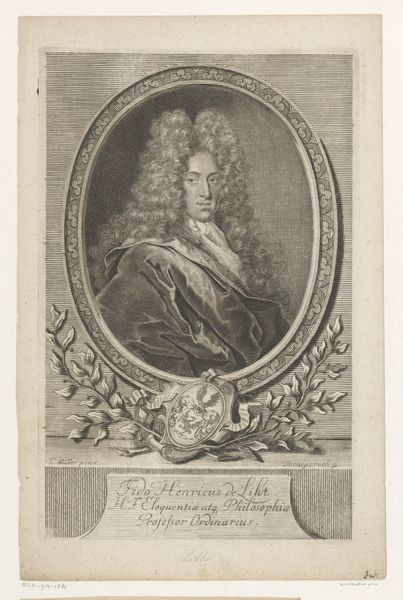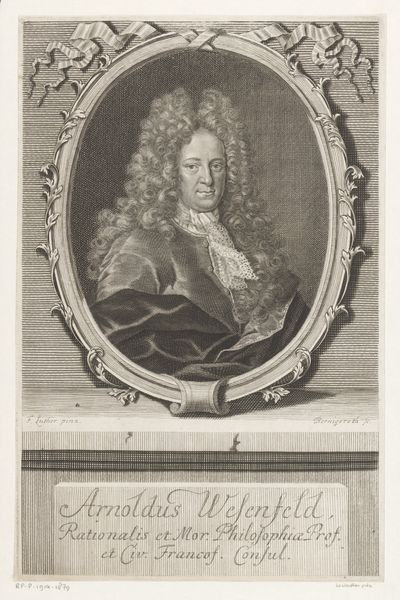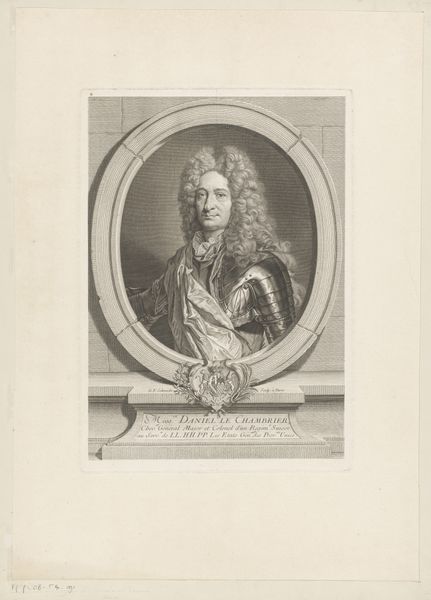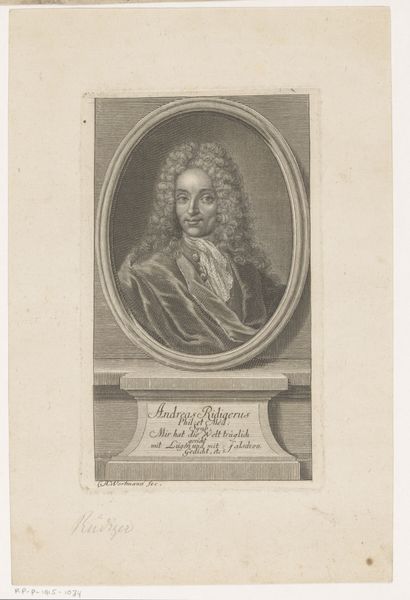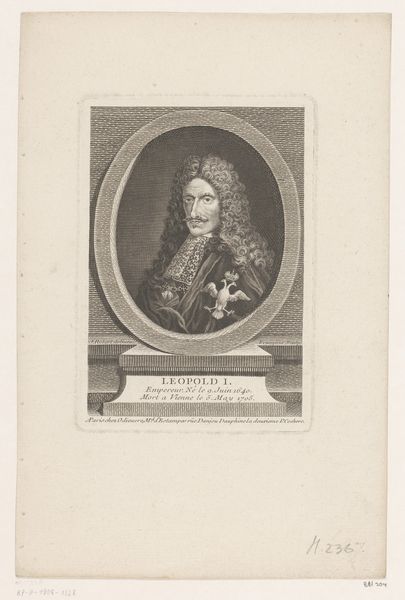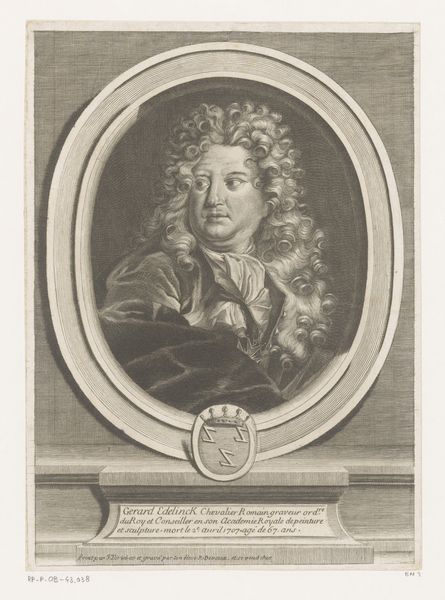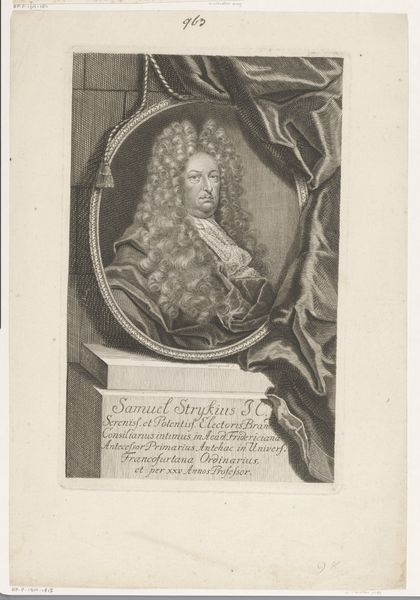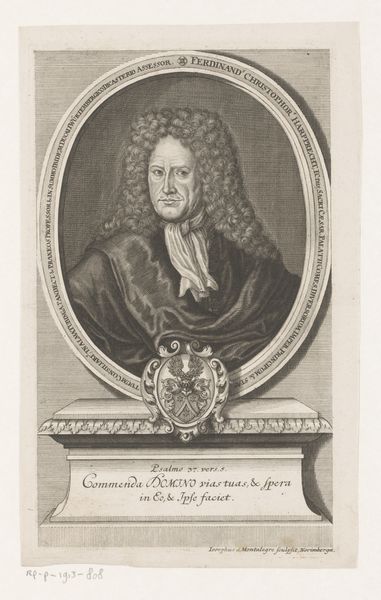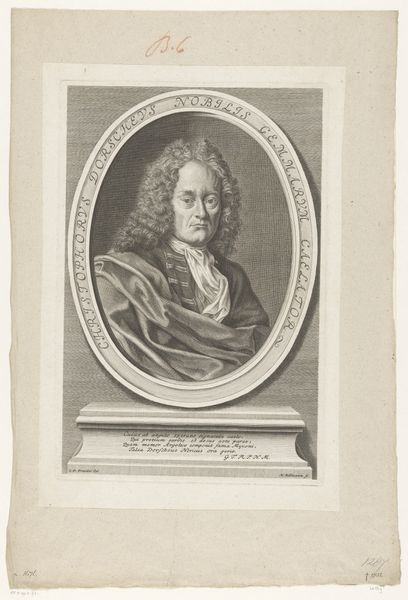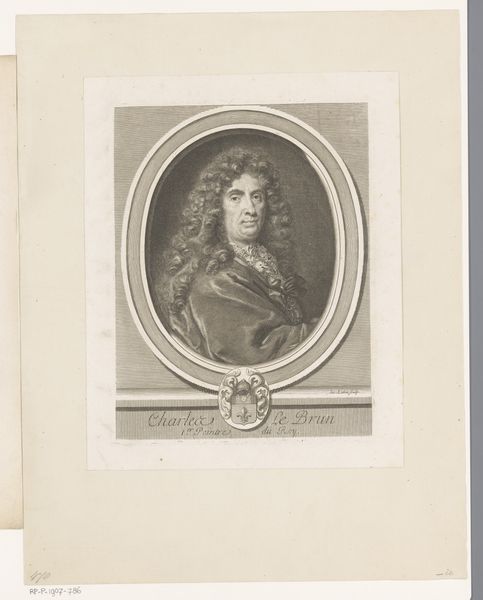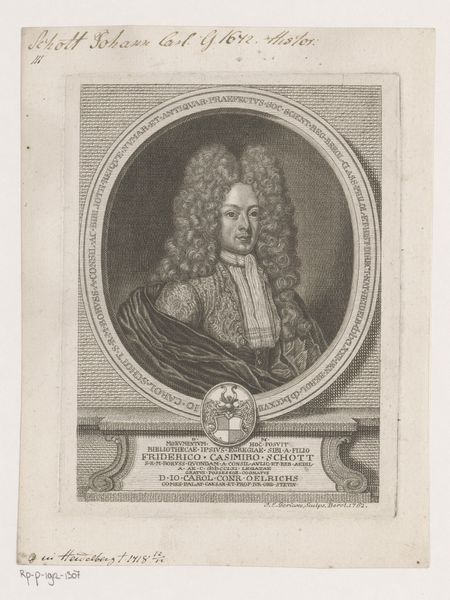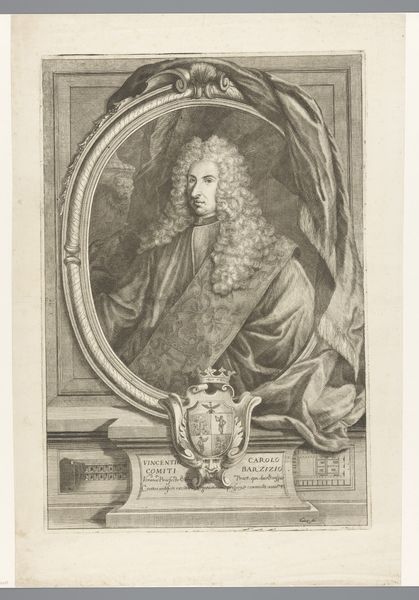
engraving
#
portrait
#
baroque
#
engraving
Dimensions: height 296 mm, width 179 mm
Copyright: Rijks Museum: Open Domain
This is Jacob Houbraken’s engraving of Sébastien Vaillant, made in the 18th century and now held in the Rijksmuseum. Notice the interplay between the rectangular and oval shapes which structure this portrait. The oval frame tightly encloses Vaillant, drawing attention to the detailed textures of his hair and clothing. Houbraken's work is a carefully constructed system of signs. The oval and rectangle don't just frame an image; they frame an identity. In semiotic terms, these shapes act as signifiers, communicating ideas about order, status and representation. The inscription at the base further anchors the image, providing a linguistic signifier that supports the visual one. Consider how the artwork's formal qualities – its lines, shapes, and textures – reflect broader cultural and philosophical concerns of the period. Is Houbraken merely depicting Vaillant, or is he engaging with the very notion of representation, challenging fixed meanings and inviting us to reconsider how we perceive identity? This work exemplifies how art functions not just aesthetically but as part of a larger cultural and philosophical discourse.
Comments
No comments
Be the first to comment and join the conversation on the ultimate creative platform.

